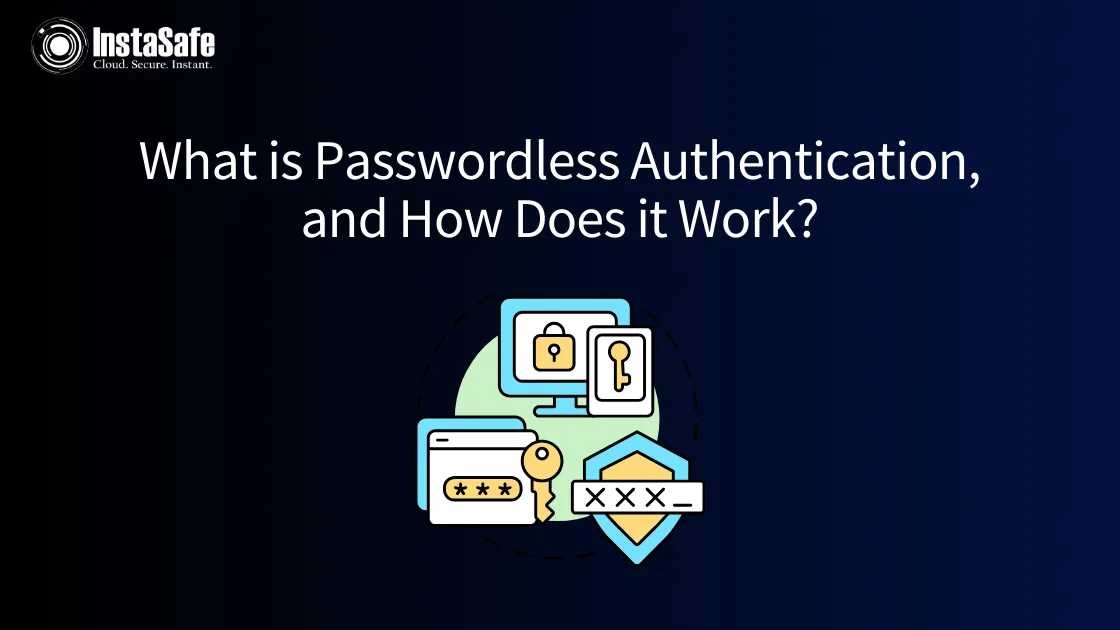What is Passwordless Authentication, and How Does it Work?

Passwordless authentication is an emerging approach to verifying a user's identity without a password. Instead of typing in a password, users provide a fingerprint scan, facial recognition, or some other form of biometric evidence.
Passwordless systems also utilise possession factors like hardware tokens, mobile apps that generate one-time codes, or magic links sent via email or SMS.
As passwords continue to be a significant weak point leading to data breaches, passwordless authentication aims to eliminate this vulnerability. This article will provide an overview of passwordless authentication, how it works, the different types of implementations, and the security implications.
What is Passwordless Authentication?
Passwordless authentication is a special type of phishing-resistant MFA which refers to verification methods that allow users to log into applications or services without needing to provide a password. It is a login approach that aims to enhance both security and convenience for end users.
Rather than typed passwords, passwordless systems rely on alternative factors to confirm users' identities before granting them access. These include:
- Biometric verification, such as fingerprint scans, facial recognition, or iris scans, can uniquely identify individuals based on physical characteristics.
- Possession-based factors like one-time passcodes sent to a user's registered mobile device or generated using an authenticator app. The user has to physically possess their device to retrieve codes.
- Magic links - single-use coded URLs sent via email, which automatically log users into a system when clicked.
Passwordless authentication aims to provide a more secure and convenient login experience by eliminating passwords and their associated drawbacks, such as complexity requirements, vulnerability to guessing/theft, and poor memorability.
How Passwordless Authentication Works
Passwordless authentication exchanges the password verification step for another identity confirmation mechanism better linked to the user.
For biometric systems like fingerprints or face scans, the captured biometric data gets compared to the user's baseline profile stored in the verification system's database. If the scanned biometric aligns with the baseline for that identity, the system authenticates the user.
Possession factor models often utilise public-key cryptography. A private and public key pair is generated and kept securely on the user's device. To authenticate, the system validates that the user has the device with the associated private key, confirming their identity.
Methods of Passwordless Authentication
There are several passwordless authentication methods available, with the most popular options being:
- Biometrics: Fingerprint scans, facial recognition, voice recognition, etc. These techniques use the unique physical characteristics of the user to identify them.
- SMS/Email OTP: The user's registered phone number or email receives a one-time numeric code to log in.
- Authenticator Apps: An app like Google Authenticator generates OTP codes without requiring a mobile signal or connectivity.
- Hardware Tokens: Small physical devices that display OTP codes. Examples are YubiKey and Feitian ePass tokens.
- Magic Links: Single-use coded URLs sent via email, which log the user in once clicked.
- Security Keys: External hardware devices like YubiKey connect via USB/NFC to verify the user's identity.
Benefits of Passwordless Authentication
Some key benefits that passwordless authentication provides include:
Improved User Experience
- No password reuse or reset hassles
- Quick biometric scans or one-tap verification
Enhanced Security Posture
- Eliminates easy password theft and phishing risks
- Built-in multi-factor strengthens identity verification
Reduced IT Overhead
- No password infrastructure to maintain and secure
- Automation lowers help desk password reset tickets
The Growing Reach of Passwordless
All major platforms now support some form of passwordless authentication natively, including Windows Hello, Apple Face ID/Touch ID, and Google's security key integration. As part of FIDO2 and WebAuthn standards, website and application passwordless capabilities continue expanding through services like Microsoft Passkeys.
Regulations also increasingly mandate passwordless options, including the European Union's PSD2 Strong Customer Authentication requirements for financial services. And industries dealing with sensitive data, like healthcare and finance lead to broader enterprise adoption.
One survey showed that 92% of businesses believe passwordless authentication represents the future. As security vulnerabilities and usability issues inherent in password-based models become more acute, adoption continues to accelerate.
Is Passwordless More Secure Than Passwords?
Passwordless authentication eliminates the risks associated with passwords getting lost, stolen, phished, or cracked through brute force attacks. So, in that sense, passwordless models provide substantially enhanced security.
However, passwordless introduces potential weaknesses like biometric spoofing or users losing possession factors. For optimal security, passwordless authentication should not remain the sole verification mechanism.
Conclusion
As passwords show increasing vulnerabilities, passwordless authentication removes this attack vector entirely by using possession and biometric factors intrinsically tied to each user. Driven by regulations and user experience demands, passwordless adoption will rapidly accelerate.
Thankfully, InstaSafe takes this a step further by requiring multiple validating factors before granting access via Multi-factor authentication, raising the security assurance level.
Frequently Asked Questions (FAQs)
- What is the difference between passwordless and OTP?
Passwordless uses biometrics, tokens, or magic links instead of passwords or OTPs for login. OTP is only one factor used in passwordless authentication.
- What are the disadvantages of passwordless authentication?
Disadvantages include high implementation costs, user inconvenience if factors like tokens or biometrics are unavailable, and increased account lockout risks.
- What are the risks of passwordless authentication?
Risks include biometric spoofing, intercepted one-time codes, loss or theft of possession factors like tokens allowing account abuse, or denial-of-service if factors fail.
Key Products
Multi Factor Authentication | Identity And Access Management | ZTNA | Zero Trust Application Access | Secure Enterprise Browser
Key Features
Single Sign On | Endpoint Security | Device Binding | Domain Joining | Always On VPN | Contextual Access | Clientless Remote Access | Device Posture Check
Key Solutions
VPN Alternatives | DevOps Security | Cloud Application Security | Secure Remote Access | VoIP Security
